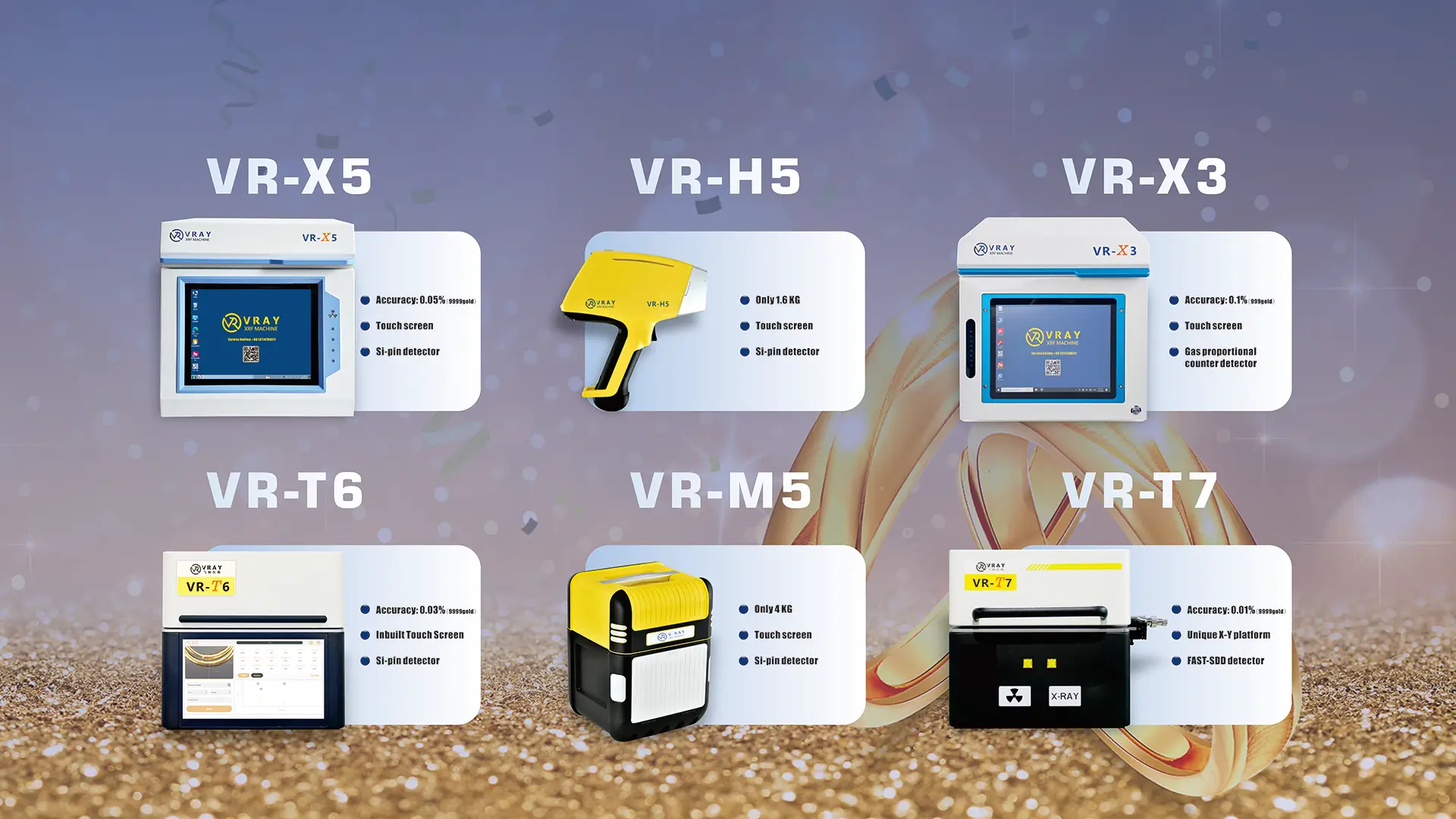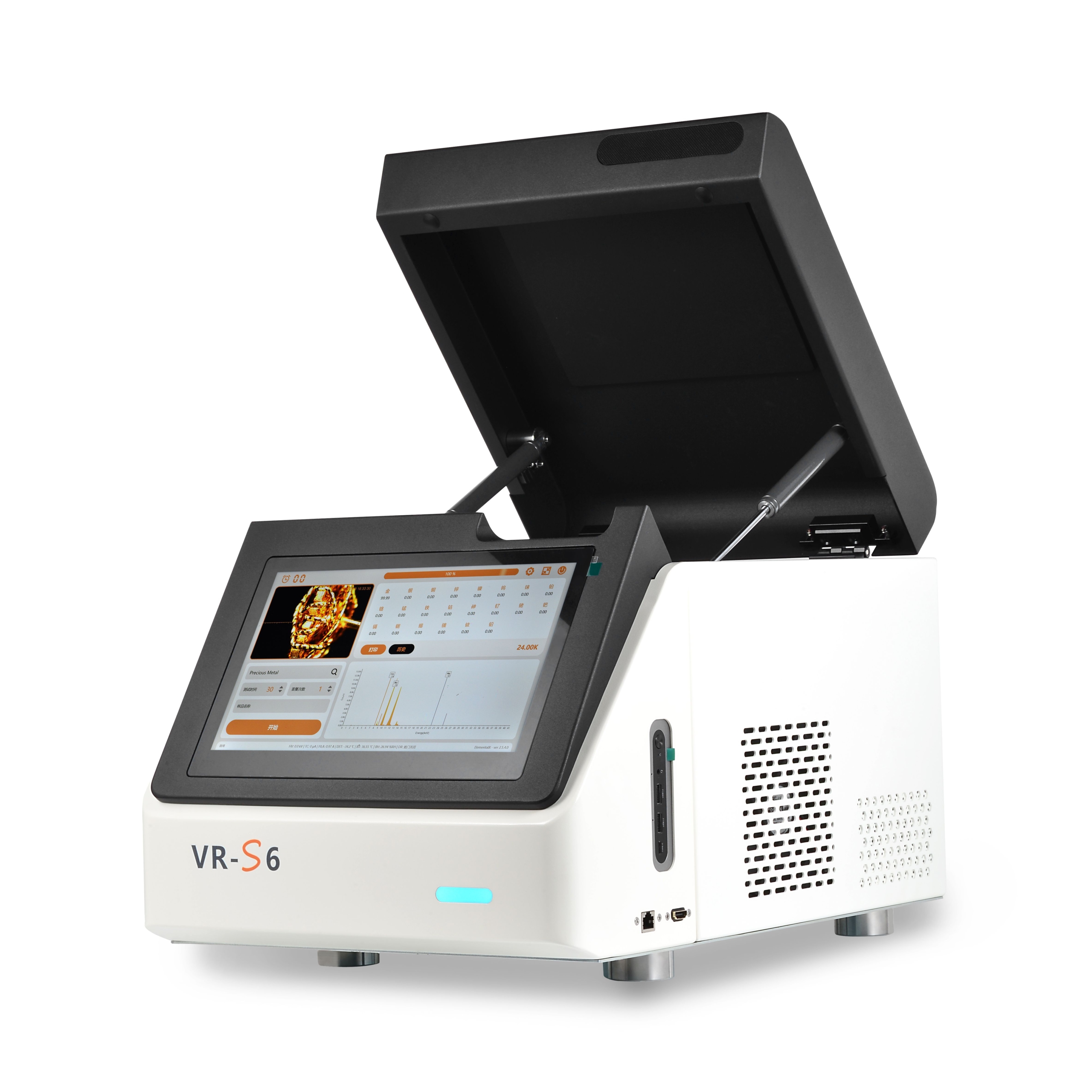¿Cuál es la diferencia entre el espectrómetro XRF y EDXRF??
Fluorescencia de rayos X (XRF) es una técnica analítica ampliamente utilizada para identificar y cuantificar la composición elemental de los materiales. Dentro de la familia XRF, Hay dos tipos principales de tecnologías: XRF de dispersión de energía (Edxrf) y Dispersivo de longitud de onda XRF (Wdxrf). Aunque comparten el mismo principio fundamental, utilizando radiografías para excitar los átomos y detectar su radiación emitida, los dos métodos difieren significativamente en los mecanismos de detección, resolución, velocidad, y escenarios de aplicación.
En este artículo, Exploraremos las diferencias clave entre EDXRF y WDXRF, y como Instrumento VRAYSoluciones EDXRF puede apoyar sus necesidades de prueba precisas.

¿Qué es edxrf??
Fluorescencia de rayos X dispersivos de energía (Edxrf) Utiliza un detector de estado sólido (como SDD o SI-PIN) para medir el energía de rayos X emitidos de una muestra. Registra el espectro de energía completa simultáneamente, convirtiéndolo en una solución rápida y flexible para el análisis de elementos múltiples.
Características clave de EDXRF:
Tiempo de análisis más rápido - Todos los elementos se miden a la vez.
Opciones compactas y portátiles disponibles.
Mayor costo y operación más fácil.
Ideal para pruebas de laboratorio en el sitio o en el sitio.
¿Qué es wdxrf??
Fluorescencia de rayos X dispersivos de longitud de onda (Wdxrf) utiliza cristales de difracción para separar rayos X por longitud de onda y mídalos secuencialmente usando un goniómetro. Este enfoque produce mayor resolución y sensibilidad, particularmente para detectar elementos con líneas espectrales superpuestas.
Características clave de WDXRF:
Resolución espectral superior - Mejor separación de líneas muy espaciadas.
Mayor precisión y precisión, Especialmente para elementos traza.
Estable para uso de laboratorio a largo plazo.
Típicamente utilizado en laboratorios industriales o de investigación a gran escala.
Edxrf vs. Wdxrf: Tabla de comparación
| Característica | Edxrf | Wdxrf |
|---|---|---|
| Principio de detección | Mide la energía de rayos X directamente | Mide la longitud de onda usando cristales |
| Velocidad de análisis | Rápido (detección simultánea) | Más lento (escaneo secuencial) |
| Resolución | Moderado | Alto (mejor separación de picos superpuestos) |
| Sensibilidad | Bueno para elementos mayores/menores | Excelente para la detección de elementos traza |
| Portabilidad | Compacto, disponible en de mano y benchtop | Grande, Solo a base de banco |
| Costar | Más bajo | Más alto debido a la óptica compleja |
| Caso de uso típico | Joyas, reciclaje de metal, RoHS, aleaciones | Cemento, petroquímico, minería, laboratorios ambientales |
Aplicaciones de EDXRF y WDXRF

EdiciónAplicaciones XRF
Análisis de metales preciosos (oro, plata, platino)
Pruebas de cumplimiento de ROHS
Autenticación de joyas
Reciclaje de metal de chatarra
Medición del espesor de recubrimiento (con modelos especializados)
Pruebas en el sitio y uso de mano
Aplicaciones WDXRF
Análisis geológico y mineral
Materiales de cemento y construcción
Análisis petroquímico y de combustible
Monitoreo ambiental de alta precisión
Académico o R&D laboratorios con muestras complejas
Por qué elegir los instrumentos XRF y EDXRF de Vray?
Mientras que WDXRF es ideal para alta gama, Análisis de nivel de rastreo en laboratorios especializados, EDXRF ofrece un equilibrio de rendimiento, portabilidad, y asequibilidad—Y ahí es donde se destaca el instrumento VRAY.
Ventajas de Vray en tecnología EDXRF:
Detección rápida y precisa para 7–20+ elementos.
Modelos personalizables para la mano, Benchtop, o necesidades todo en uno.
Detectores avanzados (SDD, contadores proporcionales de gas) Para mejorar la sensibilidad.
Software fácil de usar con resultados en tiempo real.
Ideal para pruebas de pureza de oro, Medición del espesor de placas, y verificación de material no destructivo.
Si estás en la industria de la joyería, negocio de reciclaje, o un laboratorio de CC, Vray’s EdAnalizador XRFs proporcione confiable, Soluciones rentables adaptadas a su flujo de trabajo.
Conclusión
Tanto EDXRF como WDXRF son técnicas poderosas bajo el paraguas XRF, cada uno con sus fortalezas:
Elija edxrf Si necesitas rápido, Rentable, y análisis flexible, especialmente adecuado para joyas, rieles, y trabajo de campo industrial.
Elija WDXRF Si su laboratorio requiere la mayor precisión, especialmente en matrices complejas o para detectar elementos a concentraciones muy bajas.
Soluciones EDXRF de VRAY Instrument Uno la brecha entre la asequibilidad y las pruebas de alto rendimiento, Hacer el análisis elemental accesible y eficiente. Ya sea en el campo o en el laboratorio, Vray es tu socio en precisión.

WhatsApp
Escanea el código QR para iniciar un chat de WhatsApp con nosotros.